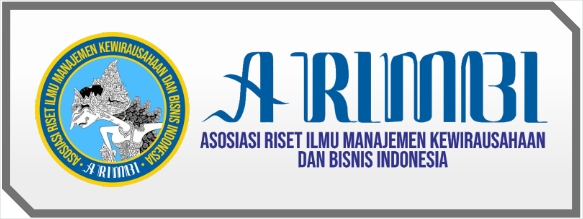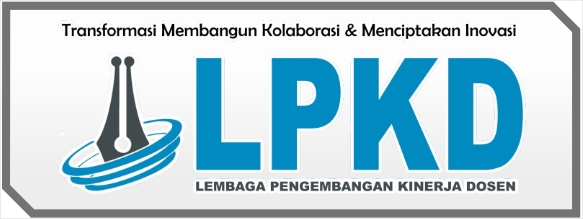SOCIAL CAPITAL SUPPORT ON PASTORAL COMPETENCE IN THE PERFORMANCE OF THE CHURCH
DOI:
https://doi.org/10.55606/iceb.v1i2.120Keywords:
Competence,Social Capital, Performance.Abstract
Competence is an essential thing in the development and growth of an organization. The church is an organizational unit that requires pastoral competence. Pastoral competence needs to be developed in improving church performance. A pastor must be able to have the social capital to improve church performance. The population of this study was pastors throughout Indonesia. The sample in this study were pastors of the Pentecostal Church in Indonesia (GPdI) spread across several regions in Indonesia as many as 42 pastors. The method in this study uses quantitative methods with SEM-PLS. The results showed that the competence of the pastor affects social capital. It can be seen from the analysis test showing that the variable considered to be significant if the P-value is smaller than the predetermined significant value (0.000 < 0.05), thus hypothesis H1 is accepted. The results of the study show that there is a relationship between social capital and church performance. It can be shown by the results of the SEM-PLS analysis showing that the P-value is smaller than the predetermined significant value (0.000 < 0.05); thus, hypothesis H2 is accepted. The results showed that there was a relationship between social capital and church performance. The results showed that there was a relationship between social capital and performance. It shows that the P-value is smaller than the predetermined significant value (0.000 < 0.05). Thus the hypothesis H3 is accepted. The originality of this study is that the competence of a pastor affects social capital, using several new dimensions that previous researchers have not studied
References
Akhigbe, E. A., & Onuoha, C. (2020). Entrepreneurial Competence and Organizational Performance of SMEs in Rivers State , Nigeria. InteInternational Academy Journal OfManagement, Marketing and Entrepreneurial Studies, 8(2), 21–31.
Anklam, P. (2002). Knowledge Management: The Collaboration Thread. Bulletin of the American Society for Information Science and Technology, 28(6), 8. https://doi.org/10.1002/bult.254
Ayalew, L., & Yamagishi, H. (2005). The application of GIS-based logistic regression for landslide susceptibility mapping in the Kakuda-Yahiko Mountains, Central Japan. Geomorphology, 65(1–2),
–31. https://doi.org/10.1016/j.geomorph.2004.06.010
Beukes, J. W. (2019). Leveraging social capital of the church for development: A case study of a farming community in wellington. HTS Teologiese Studies / Theological Studies, 75(4), 1–10. https://doi.org/10.4102/hts.v75i4.5528
Boyatzis, R. E. (2011). Managerial and Leadership Competencies. Vision: The Journal of Business
Perspective, 15(2), 91–100. https://doi.org/10.1177/097226291101500202
Cardy, R. L., & Selvarajan, T. T. (2006). Competencies: Alternative frameworks for competitive advantage.
Business Horizons, 49(3), 235–245. https://doi.org/10.1016/j.bushor.2005.09.004
Coleman, J. S. (1988). Coleman 1988.pdf. In American Journal of Sociology (Vol. 94, pp. 95–120).
De Zoysa, A., & Herath, S. K. (2007). The impact of owner/managers’ mentality on financial performance of SMEs in Japan: An empirical investigation. Journal of Management Development, 26(7), 652–666. https://doi.org/10.1108/02621710710761289
Faizan Ali, S. Mostafa Rasoolimanesh, Marko Sarstedt, Christian Ringle, Kisang Ryu, A. (2018). An assessment of the use of partial least squares structural equation modeling (PLS-SEM) in hospitality research. International Journal of Contemporary Hospitality Management, 34(1), 1–5.
Fandiño, A. M., & Aguiar de Souza, M. (2013). Questions about Trust for the Development of Social
Capital and Competence. International Journal of Business and Social Sciences, 4(11), 265–272.
Felício, J. A., Couto, E., & Caiado, J. (2014). Human capital, social capital and organizational performance.
Management Decision, 52(2), 350–364. https://doi.org/10.1108/MD-04-2013-0260
Fukuyama, F. (1995). boekrecensie TRUST : THE SOCIAL VIRTUES AND.
Hitt, M. A., Lee, H. U., & Yucel, E. (2002). The importance of social capital to the management of multinational enterprises: Relational networks among Asian and western firms. Asia Pacific Journal of Management, 19(2–3), 353–372. https://doi.org/10.1023/a:1016247920461
Hoffman, J. J., Hoelscher, M. L., & Sherif, K. (2005). Social capital, knowledge management, and sustained superior performance. Journal of Knowledge Management, 9(3), 93–100. https://doi.org/10.1108/13673270510602791
Janowicz-Panjaitan, M., & Noorderhaven, N. G. (2009). Trust, calculation, and interorganizational learning of tacit knowledge: An organizational roles perspective. Organization Studies, 30(10), 1021–1044. https://doi.org/10.1177/0170840609337933
Kwon, P. S. A. S.-W. (2002). Social Capital: PROSPECTS FOR A NEW CONCEPT PAUL. Academy of
Management Review, 1(3), 17–40.
Lynn, M. T., Berger, C. C., Riddle, T. A., & Morsella, E. (2010). Mind control? Creating illusory intentions through a phony brain-computer interface. Consciousness and Cognition, 19(4), 1007–1012. https://doi.org/10.1016/j.concog.2010.05.007
Macke, J., Sarate, J. A. R., & Vallejos, R. V. (2013). Collective Competence and Social Capital Analysis in Collaborative Networks. Journal of Systemics, Cybernetics and Informatics, 8(3), 18–23.
Morrow, E., & Scorgie-Porter, L. (2017). Bowling Alone: The Collapse and Revival of American Community. Bowling Alone: The Collapse and Revival of American Community, 1–84. https://doi.org/10.4324/9781912282319
Naviaux, R. K., & McGowan, K. A. (2000). Social capital: Implications for development theory, research, and policy. World Bank Research Observer, 15(2), 225–249. https://doi.org/10.1093/wbro/15.2.225
Perez, C., Sokolova, K., & Konate, M. (2020). Digital social capital and performance of initial coin
offerings. Technological Forecasting and Social Change, 152(November 2019), 119888. https://doi.org/10.1016/j.techfore.2019.119888
Poro, S. G., Yiga, A. P., Enon, J. C., Mwosi, F., & Eton, M. (2019). Teacher competence and performance in primary schools in Nwoya District, Northern Uganda. International Journal of Advanced Educational Research International, 4(1), 3–8.
Prusak, L., & Cohen, D. (2005). How to invest in social capital. Creating Value with Knowledge: Insights from the IBM Institute for Business Value. https://doi.org/10.1093/0195165128.003.0001
Putnam, R. D. (2002). Bowling Alone: The Collapse and Revival of American Community. The Social
Science Journal, 39(3), 489–490. https://doi.org/10.1016/s0362-3319(02)00190-8
Rass, M., Dumbach, M., Danzinger, F., Bullinger, A. C., & Moeslein, K. M. (2013). Open innovation and firm performance: The mediating role of social capital. Creativity and Innovation Management, 22(2),
–194. https://doi.org/10.1111/caim.12028
Rethans, J. J., Norcini, J. J., Barón-Maldonado, M., Blackmore, D., Jolly, B. C., LaDuca, T., Lew, S., Page, G. G., & Southgate, L. H. (2002). The relationship between competence and performance: Implications for assessing practice performance. Medical Education, 36(10), 901–909. https://doi.org/10.1046/j.1365-2923.2002.01316.x
Sarstedt, M., Ringle, C. M., Smith, D., Reams, R., & Hair, J. F. (2014). Partial least squares structural equation modeling (PLS-SEM): A useful tool for family business researchers. Journal of Family Business Strategy, 5(1), 105–115. https://doi.org/10.1016/j.jfbs.2014.01.002
Stam, W., Arzlanian, S., & Elfring, T. (2014). Social capital of entrepreneurs and small firm performance: A meta-analysis of contextual and methodological moderators. Journal of Business Venturing, 29(1),
–173. https://doi.org/10.1016/j.jbusvent.2013.01.002Sturm, R. E., Vera, D., & Crossan, M. (2017). The entanglement of leader character and leader competence and its impact on performance. Leadership Quarterly, 28(3), 349–366. https://doi.org/10.1016/j.leaqua.2016.11.007
Tonini, H., & Macke, J. (2008). Confiança E Capital Social Para O Desenvolvimento De Comunidades Rurais – O Caso Da Aprovale. Revista de Gestão Social e Ambiental, 1(3), 99–111. https://doi.org/10.5773/rgsa.v1i3.37
Waruwu, A., Silalahi, J. N., Johannis, A., & Siahaan, H. (2020). Korelasi Khotbah Ekspositori dan Antusias Jemaat dalam Beribadah di GBI Mawar Sharon Cileungsi. CARAKA: Jurnal Teologi Biblika Dan Praktika, 1(1), 52–64. https://doi.org/10.46348/car.v1i1.13
Whipple, J. M., Wiedmer, R., & Boyer, K. K. (2015). A Dyadic investigation of collaborative competence, social capital, and performance in buyer-supplier relationships. Journal of Supply Chain Management,
(2), 3–21. https://doi.org/10.1111/jscm.12071
Zaluchu, S. (2018). Analisis Kisah Para Rasul 15 Tentang Konflik
Paulus dan Barnabas serta Kaitannya dengan Perpecahan Gereja. Kurios, 4(2), 107–117. http://www.sttpb.ac.id/e-journal/index.php/kurios
















